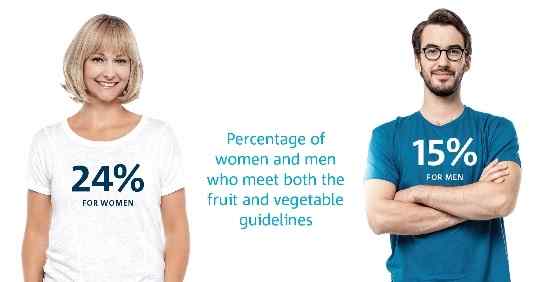Melbourne, April 3: Australia’s largest ever fruit and vegetable survey has found that four out of five Australian adults are not eating enough fruit and vegetables in order to meet the Australian Dietary Guidelines.
Worryingly, the Fruit, Vegetables and Diet Score Report released today, found one in two (51 per cent) adults are not eating the recommended intake of fruit, while two out of three adults (66 per cent) are not eating enough vegetables.
The Fruit, Vegetable and Diet Score Report, produced by the CSIRO and commissioned by Horticulture Innovation Australia, compiled the dietary habits of adults across Australia over an 18 month period.
With 145,975 participants nationwide, the survey was the largest of its kind ever conducted in Australia.
The overwhelming message is that most Australians are not as healthy as they think, and need to eat higher quantities and a greater variety of fruit and vegetables every day to meet the minimum Australian benchmark.
To help meet the benchmark, CSIRO suggests adults eat at least three serves of different vegetables every dinner time.
“Many Aussies believe themselves to be healthy, yet this report shows the majority of those surveyed are not getting all the beneficial nutrients from fruit and vegetables needed for a healthy, balanced diet,” Research Director and co-author of the CSIRO Total Wellbeing Diet Professor Manny Noakes said.

“One simple way to boost your intake is to eat three different types of vegetables with your main evening meal.”
One of the key findings in the research is that a focus on variety could be the solution to boosting consumption.
“For a country with an abundance of high-quality, locally-grown fruit and vegetables available all year round, it’s disappointing so many Australians are missing out and not enjoying enough variety in their diets,” Horticulture Innovation Australia CEO John Lloyd said.
“Australian growers are adapting to the consumer’s need for convenience by bringing high-quality fresh produce from the farm to the table in ready-to-cook and eat packaging, making it easier for time-poor adults to add more nutritious fruit and vegetables into their diets.”
People across Australia, in all occupations and weight ranges, were invited to participate in the online survey between May 2015 and October 2016. CSIRO researchers analysed this data to develop a comprehensive picture of the country’s fruit and vegetable consumption.
Women reported slightly better fruit and vegetable consumption with 24 per cent meeting both guidelines, compared with only 15 per cent of men surveyed.
When comparing the figures by occupation, construction workers and those in the science and programming sector recorded the poorest fruit and vegetable eating habits.
On the other hand, retirees and health industry workers were more likely to meet the recommended dietary guidelines.
The report also found that the CSIRO Healthy Diet Score (which measures overall diet quality on a scale of zero to 100) is positively correlated with fruit and vegetable intake.
In other words, adults who ate more fruit and vegetables also have the highest diet scores.
“Increasing the amount of fruit and vegetables we eat is one of the simplest ways Australians can improve their health and wellbeing today as well as combat the growing rates of obesity and lifestyle diseases such as heart disease, Type 2 diabetes and a third of all cancers,” Professor Noakes explained.
“Diets high in fruit and vegetables have been shown to improve psychological and physical markers of wellbeing.
“In particular, phytochemicals from fruit and vegetables reduce systemic inflammation which can lead to chronic disease.”
To find out how your diet stacks up and if you’re eating enough fruit and vegetables, take a few minutes to complete the CSIRO Healthy Diet Score survey – a free online questionnaire which evaluates diet quality and identifies individual areas of improvement, as well as providing a personal diet score out of 100.
To take the free CSIRO Healthy Diet Score visit www.csirodietscore.com

